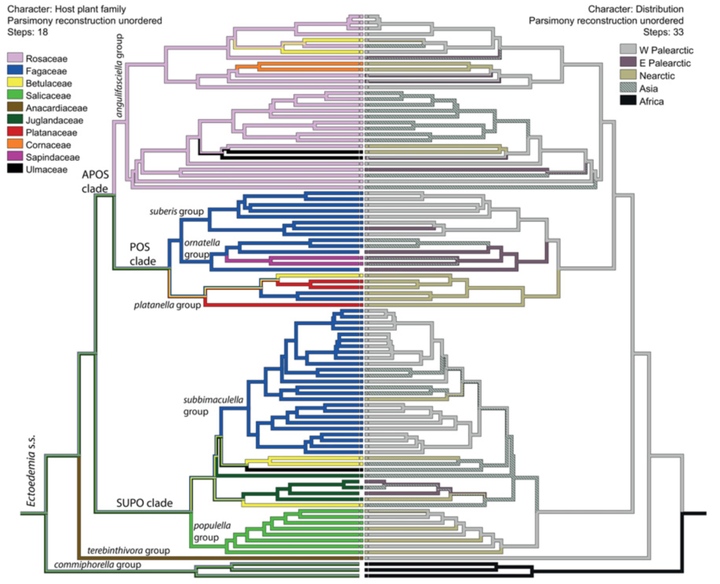A global phylogeny of leafmining Ectoedemia moths (Lepidoptera: Nepticulidae): exploring host plant family shifts and allopatry as drivers of speciation
 Image credit: C Doorenweerd
Image credit: C DoorenweerdAbstract
BACKGROUND: Host association patterns in Ectoedemia (Lepidoptera: Nepticulidae) are also encountered in other insect groups with intimate plant relationships, including a high degree of monophagy, a preference for ecologically dominant plant families (e.g. Fagaceae, Rosaceae, Salicaceae, and Betulaceae) and a tendency for related insect species to feed on related host plant species. The evolutionary processes underlying these patterns are only partly understood, we therefore assessed the role of allopatry and host plant family shifts in speciation within Ectoedemia. METHODOLOGY: Six nuclear and mitochondrial DNA markers with a total aligned length of 3692 base pairs were used to infer phylogenetic relationships among 92 species belonging to the subgenus Ectoedemia of the genus Ectoedemia, representing a thorough taxon sampling with a global coverage. The results support monophyletic species groups that are congruent with published findings based on morphology. We used the obtained phylogeny to explore host plant family association and geographical distribution to investigate if host shifts and allopatry have been instrumental in the speciation of these leafmining insects. SIGNIFICANCE: We found that, even though most species within species groups commonly feed on plants from one family, shifts to a distantly related host family have occasionally occurred throughout the phylogeny and such shifts are most commonly observed towards Betulaceae. The largest radiations have occurred within species groups that feed on Fagaceae, Rosaceae, and Salicaceae. Most species are restricted to one of the seven global biogeographic regions, but within species groups representatives are commonly found in different biogeographic regions. Although we find general patterns with regard to host use and biogeography, there are differences between clades that suggest that different drivers of speciation, and perhaps drivers that we did not examine, have shaped diversity patterns in different clades.